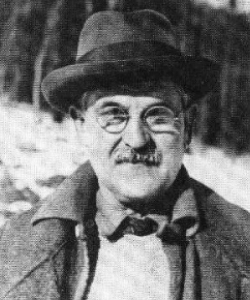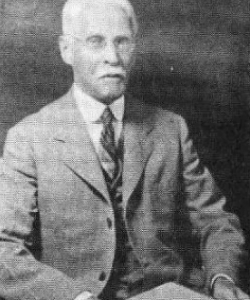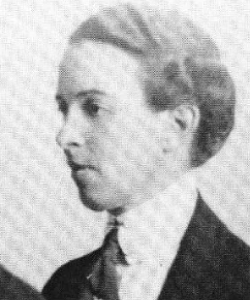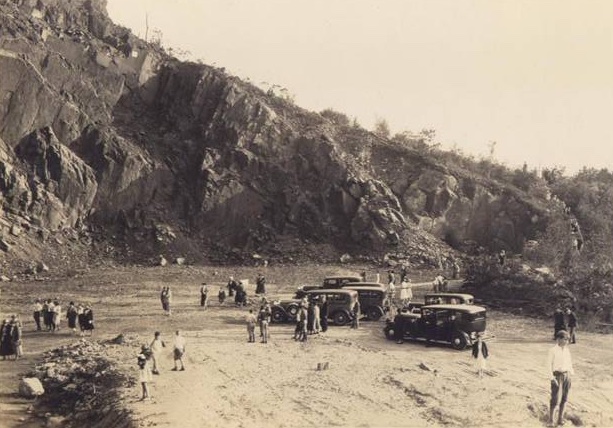SGPA’s Founding
A Regional Landmark at Risk
The story of the Sleeping Giant Park Association (SGPA) began in earnest in 1912 when Judge Willis M. Cook (bio HERE and HERE) owner of the Giant’s head and a cottage on its rugged chin, leased the land to the Mount Carmel Traprock Company. The 20-year lease included a clause that “no rock shall be taken from…any point where the quarry face would show from Mt. Carmel Ave” (read the relevant section of the lease HERE). The continuous blasting and the increasing size of the cut into the Giant’s head soon raised public furor, and the local newspapers were rife with stories of the quarry’s impact.
“[By] 1915 it was apparent to everyone who looked toward the mountain that the unsightly inroads already made by the trap-rock company into the back of the Giant’s head would soon destroy the beautiful and imposing figure—unless something were done at once to stop it.”
— Rachel M. Hartley in her 1959 book The History of Hamden Connecticut 1786-1959.
Rising to the Occasion
The quarrying eventually caught the attention of James W. Toumey, a Professor at Yale Forestry School, and a staunch advocate for public parks. Toumey envisioned the Sleeping Giant as a public park, but the onset of World War I delayed these ambitions.
Following the war, Toumey picked up where he left off. The Sleeping Giant Park Association was formed on March 4, 1924 as an offshoot of the North Hamden Improvement and Fire Association. Toumey served as SGPA’s first president, and at its initial meeting, 100 members of the New Haven community joined the organization as members.
In addition to raising funds for the purchase of land, SGPA also began accepting gifts of land, including an initial gift of 104.5 acres from John Heaton. By 1929, SGPA had acquired 845 acres, which were turned over to the State’s Park and Forest Commission.
During this time, Judge Willis Cook passed, and his widow agreed to sell the land to SGPA for $65,000. Although SGPA owned the land, the quarry operation, then run by Blakeslee Associates, still held the 20-year lease. They continued to remove rock from the Giant’s head, demanding $655,000 for the sale of their lease.

James Toumey
Founder

Arnold Dana
Second SGPA President
Arnold Dana, who would eventually go on to become SGPA’s second President, took the company to court in 1930. Having survived a childhood fall from the Giant’s chin, Dana had a special affinity for the Giant and believed it had spared his life. The trial centered around the terms of the lease, as quarrying had become visible from Mt. Carmel Ave.
After nearly three months, Superior Court Judge Carl Foster found for SGPA, stopping the existing quarrying work. Read the full opinion HERE >>
Blakeslee Associates threatened to open a new quarry on the north side of the head, but demand for quarried stone (primarily used in road construction) waned as the Great Depression worsened. Public sentiment against the quarrying also continued to grow, and was fueled by two fatalities at the quarry.
Negotiations to purchase the lease continued, with Blakeslee Associates requesting $106,000 and SGPA counter-offering with $25,000. This stalemate continued for more than a year.
Sealing the Deal
In the summer of 1933, while Dana was on vacation in Europe, SGPA Secretary Helen S. Porter made one more offer of $30,000 to secure the lease. The company accepted the offer, provided the money was paid within six months.
In only three months, at the height of the Great Depression, the resourceful Miss Porter raised the required amount, and purchased the lease on July 29, 1933.
With the land and lease now owned by SGPA, the Sleeping Giant’s head was finally protected from further quarrying. The ridge, once an undeveloped wild rise, had been transformed into a symbol of preservation and unity, safeguarding the legacy of the Sleeping Giant for generations to come.
For all that she achieved, Miss Porter remained modest, stating only “I feel like a French girl praised for saving her mother from a burning house. It just had to be done”.

Helen Porter
Early SGPA Secretary & Fundraiser

A celebration was held in 1934, to commemorate the park’s 10-year anniversary and the official closure of the quarry the year prior.
